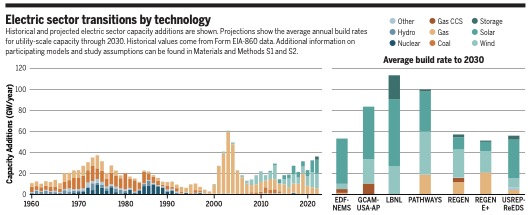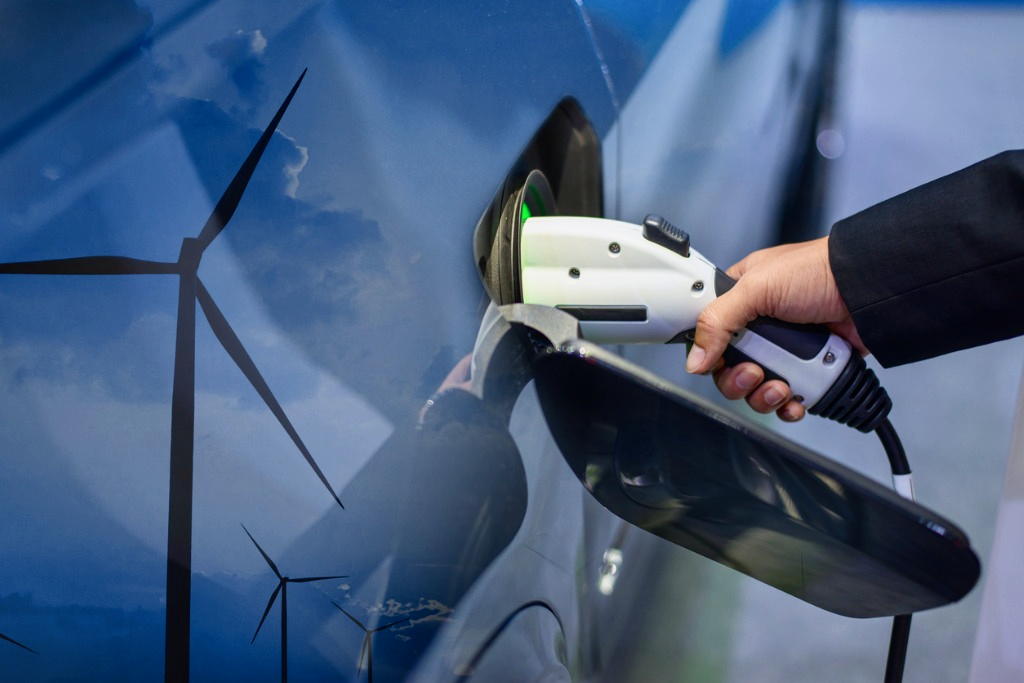The United States has set an ambitious goal to reduce greenhouse gas (GHG) emissions by at least 50% by 2030. Are we on track to succeed?
A new study by a team of scientists and policy analysts from across the nation suggests that there are multiple pathways to achieve this goal – but big commitments will need to be made, immediately.
“This study should give policy makers and other energy stakeholders some level of comfort, by showing that everybody in the field is pointing in the same direction. The case for clean energy is stronger than ever before and our study shows that the 2030 emission target can be achieved,” said Nikit Abhyankar, one of the study’s authors and a scientist in the Electricity Markets & Policy Department at Lawrence Berkeley National Laboratory (Berkeley Lab). He notes that the most urgent actions will be to double the amount of renewable capacity built each year and transition predominately to electric vehicles within the next decade or so.
“With the right policies and infrastructure, we can reduce our emissions, while saving American consumers billions of dollars and generating new employment,” he said.
Reducing GHG emissions by 50% by 2030 would put the United States on a path to limit global warming to 1.5 degrees Celsius, the target scientists say is required to avoid the worst consequences of the climate crisis.
The study, published in Science, consolidates findings from six recently published techno-economic models that simulate the U.S. energy system operations in comprehensive detail. According to the authors, the separate models all agree on four major points:
- The majority of the country’s greenhouse gas emissions come from power generation and transportation, so to reduce overall emissions by 50%, the electricity grid needs to run on 80% clean energy (up from today’s 40%), and the majority of vehicles sold by 2030 need to be electric. Other important sources of GHG emissions reduction include electrification of buildings and industries.
- The primary barrier to increased alternative energy use will not be cost, it will be enacting new policies. A coordinated policy response between states and the federal government will be necessary to succeed.
- Thanks to advances in wind, solar, and energy storage technologies, powering the electric grid with renewables will not be more expensive; and electric vehicles could save every household up to $1,000 per year in net benefits.
- A clean-energy transition would reduce air pollution, prevent up to 200,000 premature deaths, and avoid up to $800 billion in environmental and health costs through 2050. Many of the health benefits will occur in communities of color and frontline communities that are disproportionately exposed to vehicle, power plant, and industrial pollution.
“Our study provides the first detailed roadmap for how the United States can reach its 50% greenhouse gas emissions-reduction target by 2030,” said lead author John Bistline, program manager in the Energy Systems and Climate Analysis Group at the Electric Power Research Institute. “This will require tripling the pace of historic carbon reductions, an ambitious but achievable target if stakeholders collaborate across all sectors. By comparing results across six independent models, we provide greater confidence about the policies and technology deployment needed to achieve near-term climate goals, laying the groundwork for an affordable, reliable, and equitable net-zero future.”

According to Abhyankar, who led the development of one of the six models, “By 2030, wind, solar, coupled with energy storage can provide the bulk of the 80% clean electricity. The findings also show that generating the remaining 20% of grid power won’t require the creation of new fossil fuel generators.” He noted that existing gas plants, used infrequently and combined with energy storage, hydropower, and nuclear power are sufficient to meet demand during periods of extraordinarily low renewable energy generation or exceptionally high electricity demand. “And if the right policies are in place, the coal and gas power plants in the country that currently provide the majority of the nation’s electricity would recover their initial investment, thereby avoiding risk of cost under-recovery for investors.”
“Since announcing the nation’s emissions reduction pledge at the 2021 United Nations climate conference, the United States has taken steps in the right direction,” said Abhyankar. “But a lot still needs to happen. What we are hoping is that this study will give some level of a blueprint of how it could be done.”
The other models used for this study were developed by the Electric Power Research Institute, Environmental Defense Fund, National Resources Defense Council, and the MIT Joint Program on the Science and Policy of Global Change.
# # #
Founded in 1931 on the belief that the biggest scientific challenges are best addressed by teams, Lawrence Berkeley National Laboratory and its scientists have been recognized with 14 Nobel Prizes. Today, Berkeley Lab researchers develop sustainable energy and environmental solutions, create useful new materials, advance the frontiers of computing, and probe the mysteries of life, matter, and the universe. Scientists from around the world rely on the Lab’s facilities for their own discovery science. Berkeley Lab is a multiprogram national laboratory, managed by the University of California for the U.S. Department of Energy’s Office of Science.
DOE’s Office of Science is the single largest supporter of basic research in the physical sciences in the United States, and is working to address some of the most pressing challenges of our time. For more information, please visit energy.gov/science.
